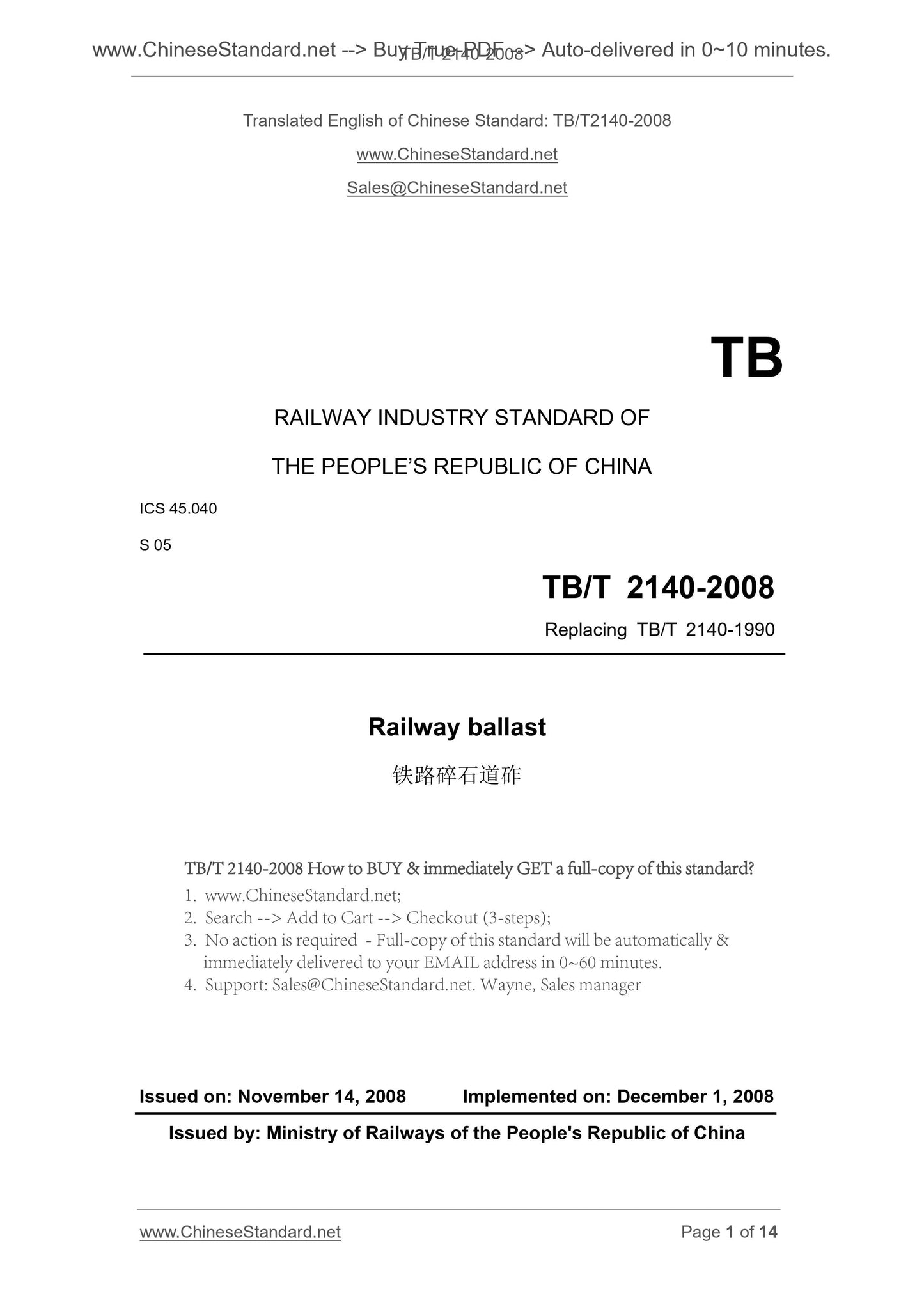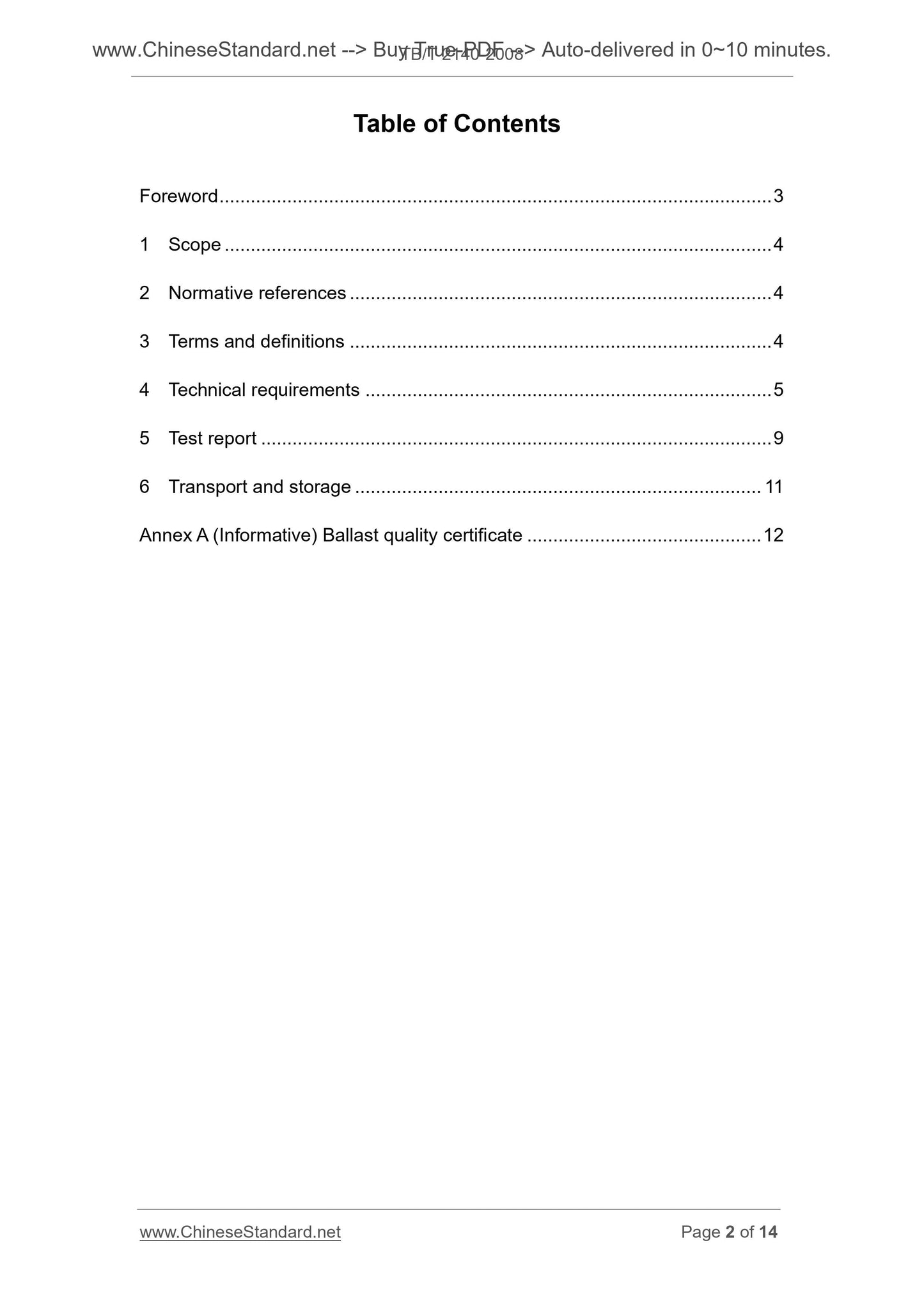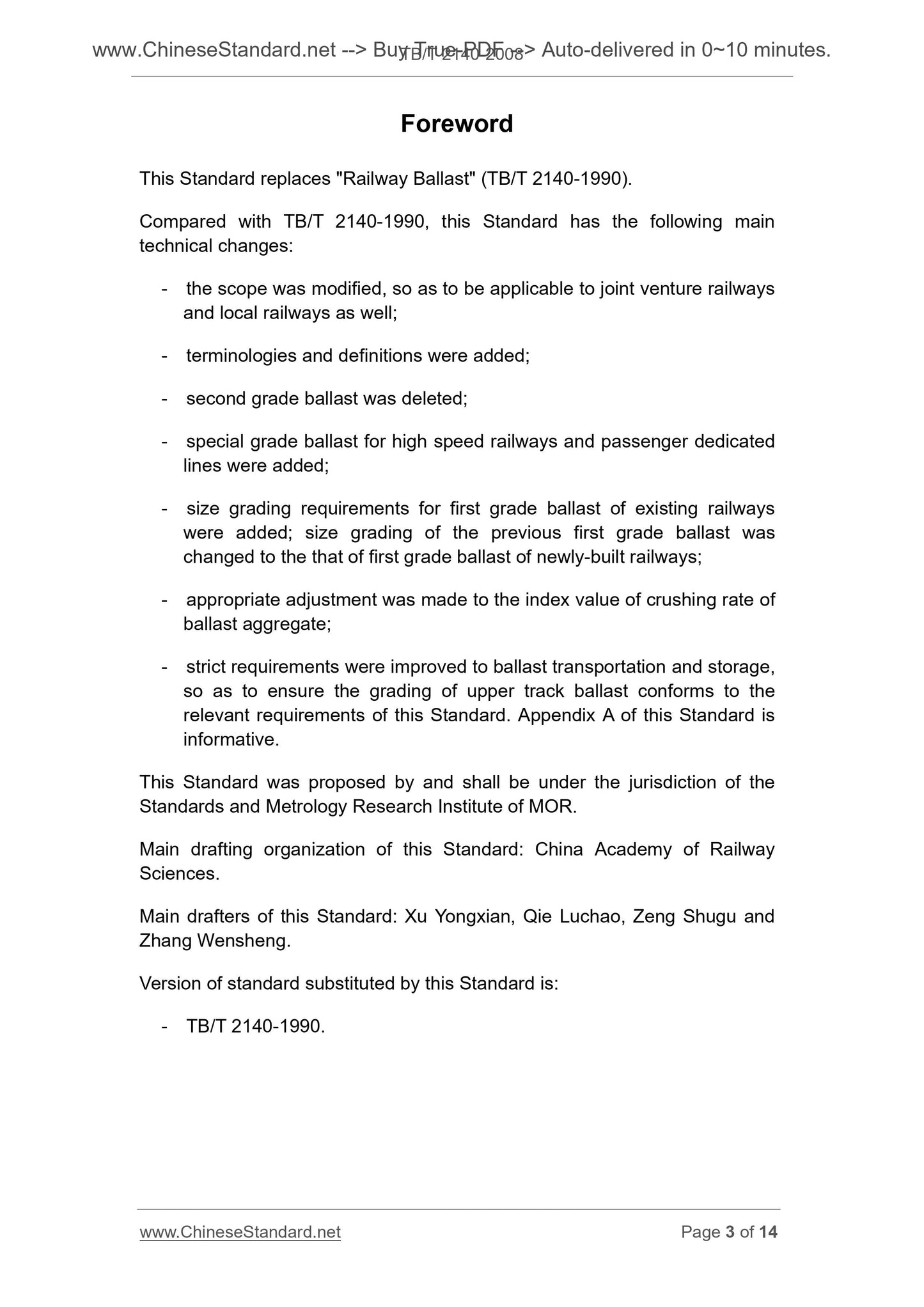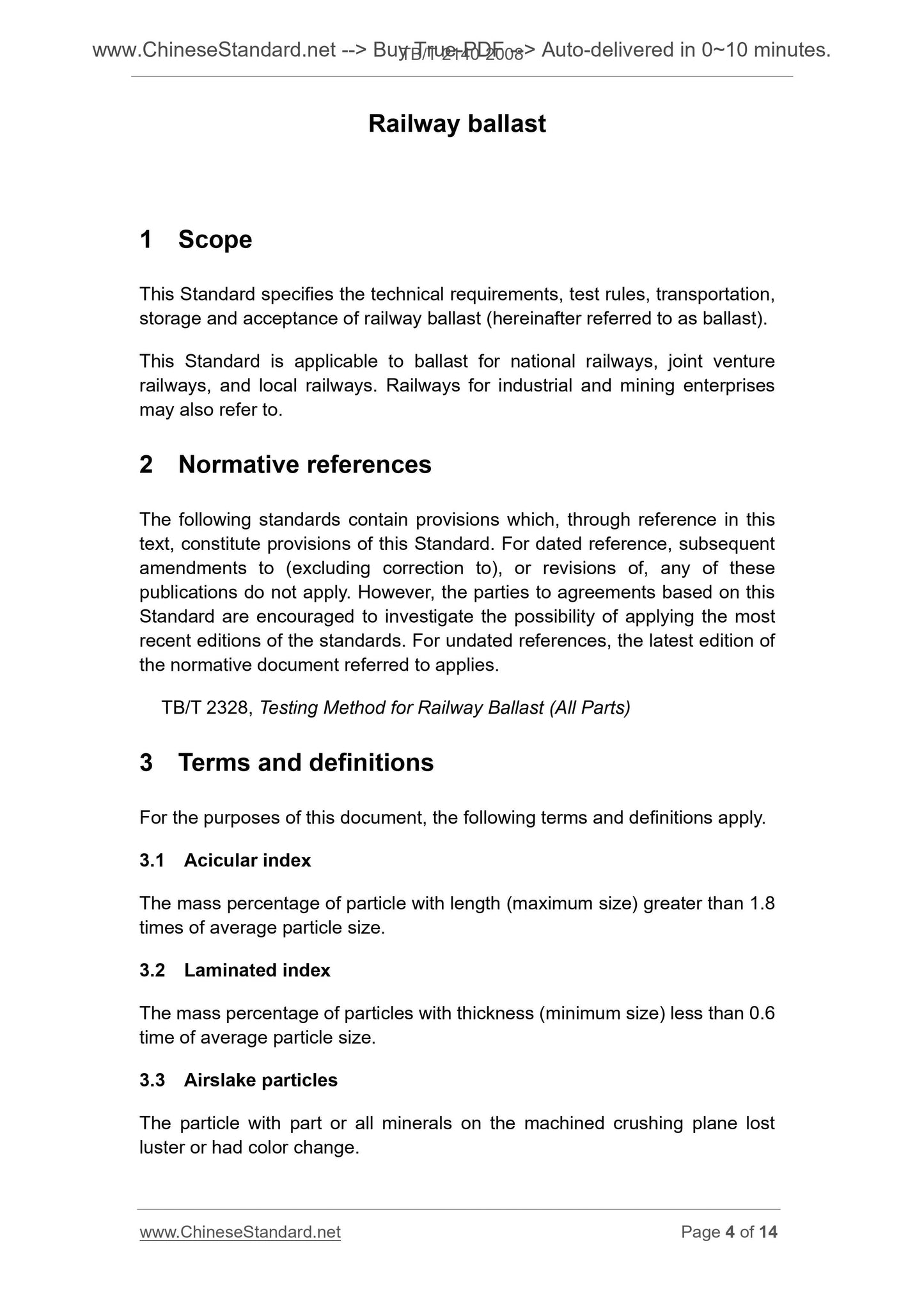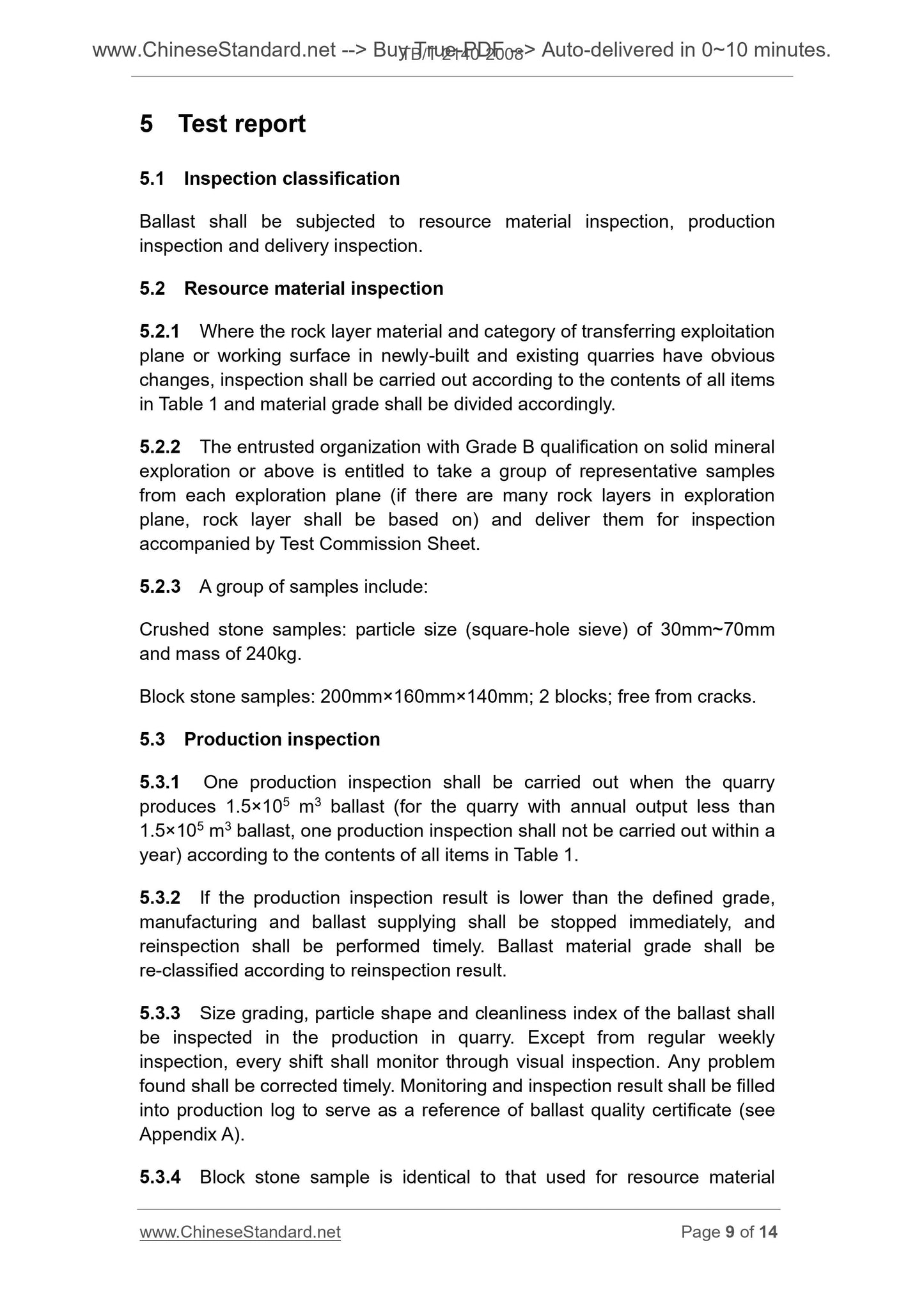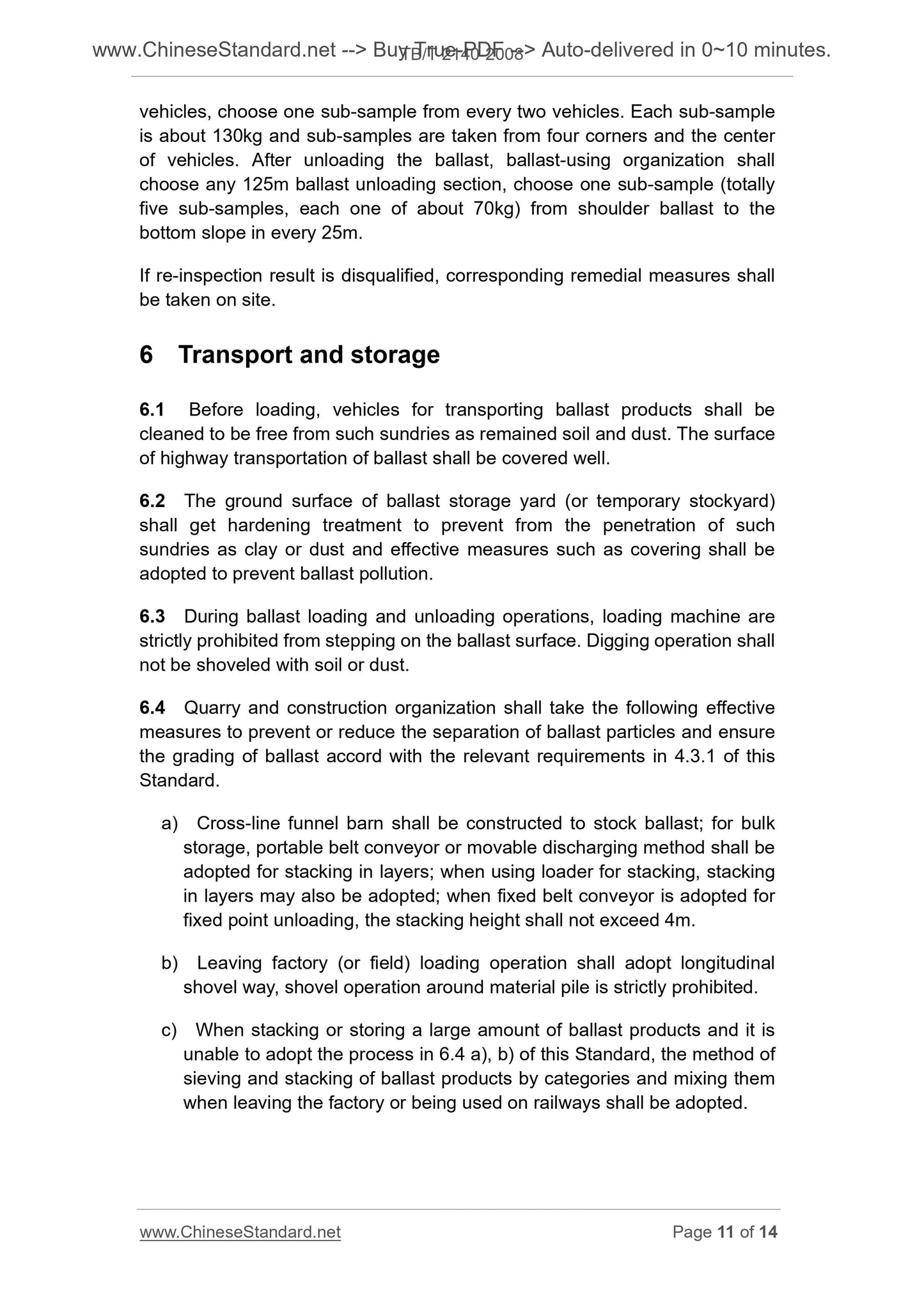1
/
of
6
www.ChineseStandard.us -- Field Test Asia Pte. Ltd.
TB/T 2140-2008 English PDF (TB/T2140-2008)
TB/T 2140-2008 English PDF (TB/T2140-2008)
Regular price
$75.00
Regular price
Sale price
$75.00
Unit price
/
per
Shipping calculated at checkout.
Couldn't load pickup availability
TB/T 2140-2008: Railway ballast
Delivery: 9 seconds. Download (and Email) true-PDF + Invoice.Get Quotation: Click TB/T 2140-2008 (Self-service in 1-minute)
Newer / historical versions: TB/T 2140-2008
Preview True-PDF
Scope
This Standard specifies the technical requirements, test rules, transportation,storage and acceptance of railway ballast (hereinafter referred to as ballast).
This Standard is applicable to ballast for national railways, joint venture
railways, and local railways. Railways for industrial and mining enterprises
may also refer to.
Basic Data
| Standard ID | TB/T 2140-2008 (TB/T2140-2008) |
| Description (Translated English) | Railway ballast |
| Sector / Industry | Railway and Train Industry Standard (Recommended) |
| Classification of Chinese Standard | S05 |
| Classification of International Standard | 45.040 |
| Word Count Estimation | 12,145 |
| Date of Issue | 2008-11-14 |
| Date of Implementation | 2008-12-01 |
| Older Standard (superseded by this standard) | TB/T 2140-1990 |
| Quoted Standard | TB/T 2328 |
| Regulation (derived from) | Industry standard filing Notice 2010 No. 8 (No. 128 overall) |
| Issuing agency(ies) | Ministry of Railways of the People's Republic of China |
| Summary | This standard specifies the railroad gravel ballast (hereinafter referred to as ballast) technical requirements, inspection rules and transport, storage and experience exchange. This standard applies to the national railway, a joint venture railways, local railways with gravel ballast, industrial and mining rail can also refer to use. |
Share
